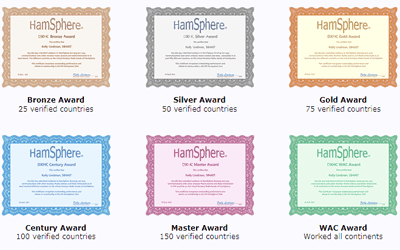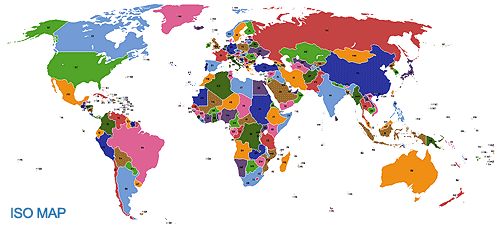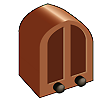| Forum List | Message List | Search |
|
HamSphere Newsletter May / June 2012
2012-05-25 19:15 |
Admin Registered: 16 years ago Posts: 1,061 |
|
Dear HamSphere Operators
Welcome to the May / June 2012 Edition of the HamSphere Newsletter. Lots of stuff, so here we go: DXHC Awards HamSphere is proudly presenting DXHC = DX HamSphere Club Awards. We now give out six types of Awards for QSO achievements and include subscription extensions in the Awards. To participate in this Club you will need to establish two-way contacts with operators in as many countries as possible on the HamSphere virtual Amateur Radio bands. 
http://www.hamsphere.com/dxhc Great DX achievements Confused about DXCC countries? We must not mix-up the official Ham Radio DXCC countries with HamSphere countries. HamSphere bases all country trackings to ISO codes as we check the IP numbers of the users. Unfortunately some DXCC countries carry the same ISO code thus we will not be able to determine some of them. Currently we have users from 208 ISO countries. 
ISO stands for (International Organization for Standardization) and every IP address can be tied to an ISO code. Congratulations to Vic VE3JAR who has sofar managed to get 153 verified ISO countries via QSL cards thus awarded the Master Award followed by Paul Sanders 2HS3433 from USA with 101 verified ISO countries who is awarded with a Century Award. HamSphere provides a Top-100 DX list where you can see the rest of the DX operator top 100 status. http://www.hamsphere.com/dxhc QSL Handling HamSphere handles about 2000 QSL cards per day over the built in QSL management system. We urge the operators to send one card per QSO only to minimize the load on the system. And most importantly, only send a card if you really have made the QSO. Doubling and DX “Pile up” traffic In the last newsletter we addressed the problem of “Doubling” since it increased on HamSphere. Doubling is when two or more stations key up at the same time. The situation became a little better for a few weeks after we informed about it in the last newsletter, but it is still a small problem, mainly because of the DX Awards. The simple procedure to avoid doubling is: At the end of each over (transmission) you say: “the call sign of the user who will speak next“ followed by “this is” and “your callsign” and “over”. The DXHC Awards have created a fantastic new scene on HamSphere. We now get real so called “Pile Ups” for rare and exotic DX stations which is great, but it also calls for a rigid and diciplined traffic procedure. Since we allow both licensed and unlicensed users on the system, the procedure to work DX is not always known. In addition, some of our licensed users come from VHF/UHF and have never experienced real shortwave pile-ups. For DX operation, when there is a rare station on HamSphere. Here are some simple pointers: • Keep it short. Name, QTH and Signal report only. Do not start talking about the weather and wind or other irrelevant things. Many people in line for QSO. • When a DX addresses a station, DO NOT interrupt until they have at least exchanged Name, QTH and signal reports • Call only using the two last digits of your callsign such as “Hotel Charlie” if your callsign were SM7NHC • If HS user, just call using your suffix. Like 101, if your callsign is 110HS101 Some DX stations are used to work “pile ups”. They know how to handle the situation and they can control the calling stations. But as we have many beginners on the band, it can be difficult to get through a “pile up”. On shortwave there are sometimes self appointed channel masters who distribute the “pile-up” calls to the DX in an orderly fashion. We have seen some activity like that on HamSphere already. So if you have DX Pileup experience, perhaps you can take over and instate yourself as a DX master who distribute and takes the calls in an orderly fashion. BC Band Broadcasts Steve Miller is running the DX Power Hour Of Music only found on HamSphere 48 meter Band. The show usually lasts for about an hour, given an extra thirty min depending on the number of listeners and band conditions. It is broadcast in the BC Band on 06.225.00 MHz. The show will be on at least twice a month usually on the last Friday and sometimes Saturday evenings beginning at 7pm EST or 1900 hrs UTC Time. Upcoming broadcasts are scheduled as follows; 1) May 26th @ 1900 hrs UTC, 06.225.00 MHZ 2) June 8th @ 1900 hrs UTC,06.225.00 MHZ 3) June 23rd @ 1900 hrs UTC,06.225.00 
30 meter digital and analog software We get many questions about SSTV on HamSphere and how you make it work. SSTV means Slow Scan TeleVision and it is a way of transferring pictures over the airwaves. On HamSphere all SSTV activity is carried out on the 30 meter band. There are basically two different SSTV systems, the analog MMSSTV and the digital EasyPAL. Both systems work fine on the HamSphere 30 meter band. In order to use digital transmission you need to put the HamSphere transceiver in CODOFF mode meaning No Audio Codec. There is also a different mode called PSK31 which is a text-messaging system based on audio sub carriers. Finally you can use the real old classic RTTY, which is a tele type system for transferring texts. The speed is usually set out in Baud, like 45 or 50 bauds. Download SSTV, EasyPal, PSK31, RTTY Software here: http://www.hamradio.se/ If you are interested in digital modes, make sure you become added to the SSTV on HamSphere group on FaceBook Networks Beginning Monday June 4th and on the first Monday of the month, will be the new "ole cod-gers" net. We will be located on 20m, 14.290.00. Check in time will be 22:00 utc time. This will be an open forum and discussion hosted by 2HS8000 (Paul), moderated and chaired by G1HAH (Brian). Our goal is to promote Hamsphere and we expect everyone to follow the Hamsphere rules and guidelines. All are welcome. See ya there ye "ole cod-gers". More info here about this NET Support Panel We are happy to see that our Support / Help desk is used with progress. We are trying to answer all your questions within 12 hours. Reach the Support / Help desk here Server platform status In July 2012 we will move from the old server platform to a newer more stable server. There may be some outages during this process and information about this move will be put in the Latest News section. We have removed the distributed database system between the HamSphere servers as it was really hard to keep it synchronized. We are currently running a master / slave solution, hence the somewhat longer login times from London, Iceland and USA servers. The Australian server has been temporarily removed. We need to find a new AU provider as it became too expensive with the Cloud Central provider who charges quite a bit for bandwidth. It became by far the most expensive and less used node. For some reason bandwidth is more expensive “Down Under”. But we promise, we will really try our best to find a cheaper alternative. We are among tings working on a possible Hong Kong server solution that would provide excellent ping times from Austral/Asia Tell a friend On public request we have created a “Tell a Friend” page. If you enjoy HamSphere, you can send invitations to your friends and also get rewarded if your friends join HamSphere. 
How does it work? In your invitation message there is a tracking link so that the system knows when your friend creates an account with HamSphere. If he/she will do so you will be credited extra subscription days. http://www.hamsphere.com/tell.php (Please note that you will need to be logged on to get to the page) DX Information Rare DX Operators from the following countries have been active (And verified via IP-number) on HamSphere since the last News Letter. MADAGASCAR, LAO PEOPLES DEMOCRATIC REPUBLIC, SYRIAN ARAB REPUBLIC, BAHRAIN, MALDIVES, BENIN, ANGOLA, GUAM, AZERBAIJAN, JERSEY, GHANA, MOZAMBIQUE, SURINAME, NEW CALEDONIA, TAJIKISTAN, BERMUDA, BARBADOS, MONTSERRAT, FALKLAND ISLANDS, ALBANIA, DOMINICA, VANUATU, GAMBIA, SENEGAL, NEPAL, BELIZE, MACAU, PARAGUAY, ZIMBABWE, MONACO, OMAN, MAURITIUS, SWAZILAND, BAHAMAS, NIGERIA, MARTINIQUE, COTE IVOIRE, GIBRALTAR, HONG KONG, SAINT KITTS AND NEVIS, ARUBA, ARMENIA, IRAN, YEMEN, GUADELOUPE, QATAR, NAMIBIA, BANGLADESH, SRI LANKA, PAKISTAN, EL SALVADOR, KYRGYZSTAN, HONDURAS, SINGAPORE, PANAMA, IRAQ, KUWAIT, SAINT LUCIA HamSphere on Twitter and FaceBook We have now received over 5000 Likes on FaceBook – Thank you FB users. And thank you to the almost 2000 followers on Twitter. Super! 

Software Download Download the latest HamSphere software 3.0.2.8 After downloading 3.0, please start the transceiver and login to make sure everything works in your computer. Java has now officially released version 7. http://www.java.com. It has proven to solve a few connection problems if you have any, so please try it. Subscriptions Normally you click the subscribe button on the Transceiver to start or renew a subscription, but I have received some request for the link to the subscribe page, here it is: http://www.hamsphere.com/subscribe Lost Password How do I get a new password? We get this question often. Here are two links to fix this. Click here to get a new password or Click here to set your own password If it still doesn't work, please contact our support and we will manually give you a new password. Software / Hardware News If you login to the www.hamsphere.com you will see a bar with a few buttons such as Download, Forum, QSL Cards, Messages, Settings, Support. With these buttons you can do many things such as: * Change name QTH * Edit signature * Forums settings * Change password * Private messages * QSL Cards (Edit and view) * Support / Help desk * Tell a friend * Download page Thank you for your interest and the continued Support. Kelly 5B4AIT HamSphere Founder |
|
© HamSphere AB, All Right Reserved.